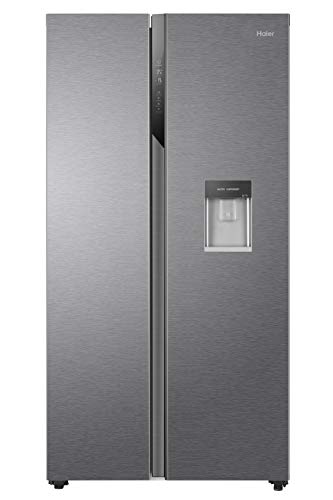
Fridge Freezer Best Buy
FollowOverview
-
Founded Date 24 April 2002
-
Sectors Logistics
-
Posted Jobs 0
-
Viewed 2
Company Description
5 Laws That Can Benefit The Fridge UK Industry
The Comprehensive Guide to Refrigerators in the UK
Fridges are a necessary home appliance in every home, serving an important function in food conservation and safety. The UK market provides a varied series of fridge types, sizes, functions, and brand names. This post intends to supply a thorough understanding of fridges available in the UK, including their features, energy efficiency, and factors to think about when purchasing.

Kinds Of Refrigerators Available in the UK
When looking for a refrigerator, it is crucial to comprehend the various types offered. Each type comes with its own set of functions and functions, accommodating different requirements and preferences. The most typical types of fridges discovered in the UK consist of:

1. Leading Freezer Refrigerators
- Description: The conventional design, including the freezer compartment on top.
- Pros: More budget-friendly, roomy, easy access to fresh food.
- Cons: Limited freezer area, the top might be less hassle-free for bulk items.
2. Bottom Freezer Refrigerators
- Description: Freezer lies at the bottom, allowing easier access to fresh food.
- Pros: Greater benefit, better visibility of fresh products.
- Cons: Usually more costly, some might battle with large frozen items.
3. Side-by-Side Refrigerators
- Description: Features two vertical compartments, one for the fridge and one for the freezer.
- Pros: Ample storage area, simple to access both frozen and fresh foods.
- Cons: Wider footprint, they might not fit in smaller kitchen areas.
4. French Door Refrigerators
- Description: Combines functions of bottom freezers and side-by-sides, with 2 doors for the fridge on top.
- Pros: Stylish style, spacious, and frequently includes sophisticated functions.
- Cons: Higher cost point, aligns badly with smaller sized kitchen area designs.
5. Compact Refrigerators
- Description: Smaller models designed for limited spaces.
- Pros: Ideal for small houses or offices, energy-efficient.
- Cons: Limited storage capability, might do not have features.
6. Integrated Refrigerators
- Description: Designed to blend seamlessly with cooking area cabinets.
- Pros: Custom fit, visual appeal, increases home worth.
- Cons: Higher expense, may offer less flexibility in positioning.
7. Smart Refrigerators
- Description: Equipped with Wi-Fi and clever innovation features.
- Pros: Advanced includes like touch screens and internal cams.
- Cons: Expensive, more complex to fix.
| Refrigerator Type | Availability | Typical Price Range | Energy Efficiency |
|---|---|---|---|
| Leading Freezer | Moderate | ₤ 300 – ₤ 600 | Typical |
| Bottom Freezer | High | ₤ 400 – ₤ 800 | Above Average |
| Side-by-Side | Easy | ₤ 800 – ₤ 1500 | Differs |
| French Door | High | ₤ 800 – ₤ 2000 | High |
| Compact | Restricted | ₤ 200 – ₤ 500 | Average |
| Integrated | Custom-made | ₤ 1000 – ₤ 2500 | High |
| Smart | Variable | ₤ 1200+ | High |
Secret Features to Consider
- Energy Efficiency: Look for designs that are energy-efficient. In the UK, devices are rated from A (most efficient) to G (least efficient). An A+ rating and above can cause significant energy savings.
- Capacity: Choose a fridge with sufficient capability for your family. A basic guideline is 100-200 liters per person.
- Sound Level: Consider models that run silently, particularly if the kitchen area is near living areas.
- Cooling Technology: Features like frost-free technology deserve the investment, as they minimize maintenance.
- Adjustable Shelves: Having adjustable shelves improves the versatility to store bigger items.
- Temperature Control: Check for easy-to-use temperature level controls and zones for various kinds of food.
- Design: Choose the style and color that matches your kitchen area visual, whether you prefer a modern stainless-steel appearance or a traditional retro surface.
Purchasing Tips
- Determine Your Needs: Consider your cooking routines, family size, and kitchen area area.
- Set a Budget: Refrigerators been available in various cost varieties. Develop a budget plan before you begin shopping.
- Research Study Energy Ratings: Invest in energy-efficient designs to conserve on utility bills.
- Check out Reviews: User experiences can supply insights into dependability and efficiency.
- Compare Brands: Some brand names are understood for their sturdiness while others may use more innovative functions.
Regularly Asked Questions (FAQs)
1. For how long do fridges typically last?
- Fridges typically last between 10 to 20 years, depending on the brand name and how well they are kept.
2. Exist any upkeep pointers for lengthening the life of a refrigerator?
- Regularly clean the coils, check the door seals, and periodically thaw if necessary to maintain optimal efficiency.
3. What is the best fridge-freezer size refrigerator for a household of 4?
- For a household of four, a refrigerator with a capacity of around 400-600 liters is typically sufficient.
4. Do I need to fret about energy intake when buying a refrigerator?
- Yes, energy intake is essential. Search for systems with high energy performance ratings to minimize monthly expenses.
5. Should I choose a fridge with a water and ice dispenser?
- This function can be convenient, specifically for families. However, it might need more upkeep than standard designs.
Purchasing a refrigerator is a significant choice for any family in the UK. With different types offered, each with its unique functions and advantages, it is important to evaluate individual requirements before choosing. By thinking about factors such as energy efficiency, capacity, and style looks, customers can pick a fridge that lines up well with their lifestyle, ultimately boosting their kitchen experience while securing food quality and freshness.


